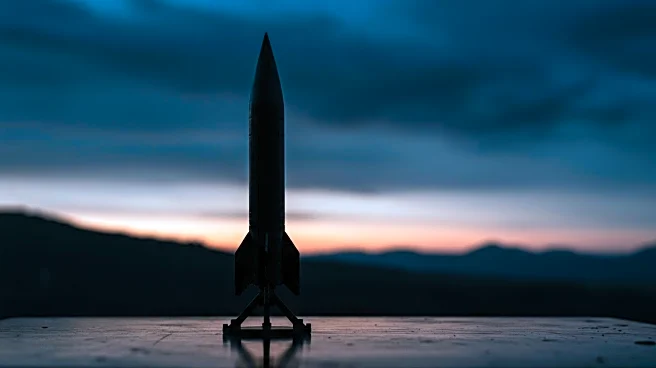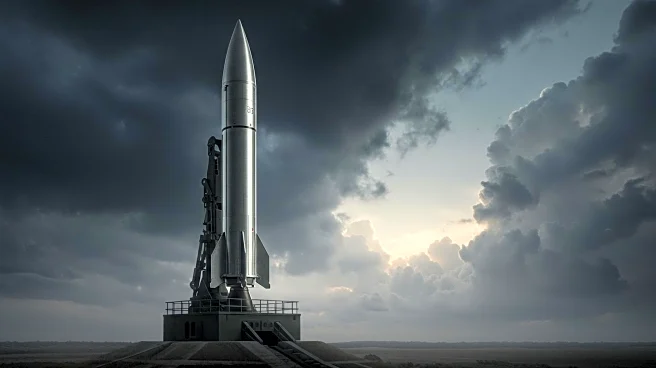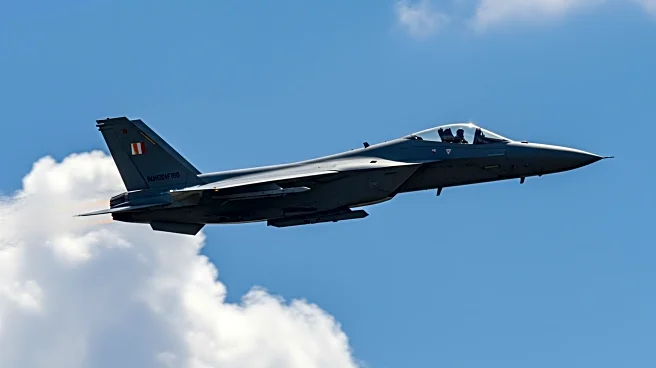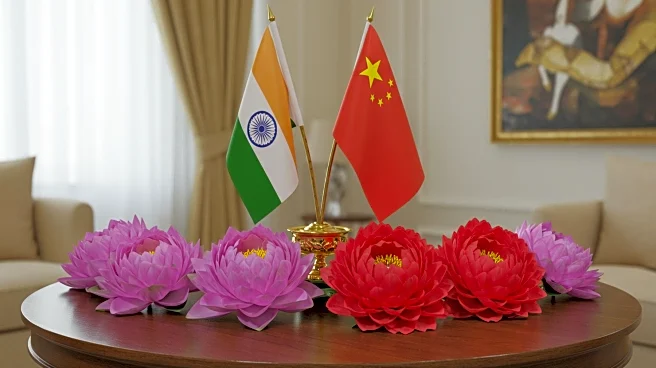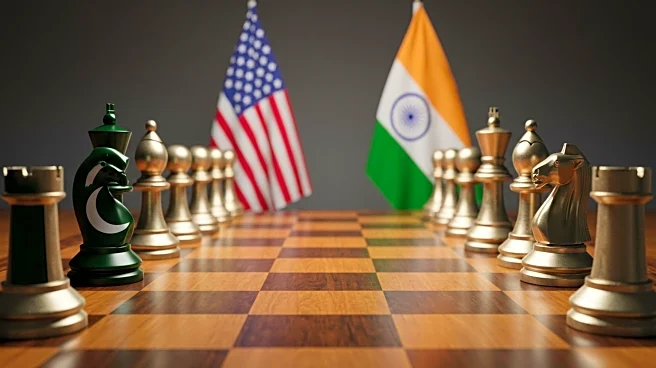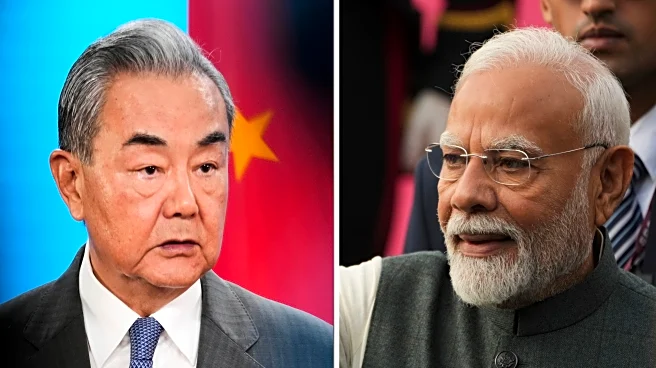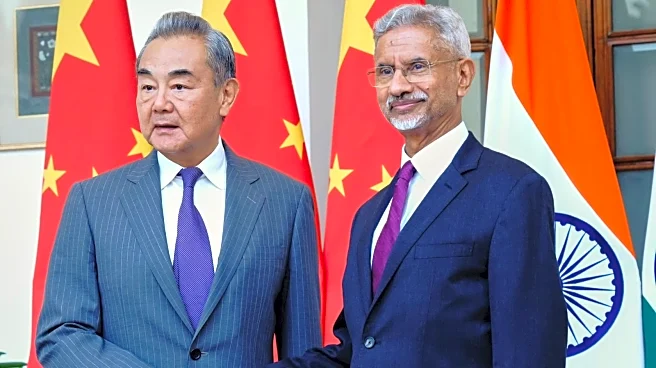What's Happening?
India has successfully test-fired the Agni-5, an indigenously developed intermediate-range ballistic missile capable of carrying a nuclear warhead. The test took place in Odisha state and was confirmed by India's defense ministry to have met all operational and technical parameters. The Agni-5 has a range of over 5,000 kilometers, putting it within striking distance of China and Pakistan. This development comes as Indian Prime Minister Narendra Modi prepares for a visit to China for the Shanghai Cooperation Organization summit. The test follows a period of strained relations between India and China, marked by deadly border clashes in 2020. The missile test is part of India's broader defense strategy, which also considers its nuclear-armed neighbor, Pakistan.
Why It's Important?
The successful test of the Agni-5 missile underscores India's strategic military capabilities and its ongoing efforts to maintain a balance of power in the region. The test is significant in the context of India's complex relationships with both China and Pakistan, two nuclear-armed neighbors. As China expands its military arsenal, India is compelled to enhance its own defense capabilities. The test also highlights the geopolitical tensions in the Asia-Pacific region, where India and China are vying for influence. The missile's capability to reach deep into Chinese territory could serve as a deterrent, potentially stabilizing the region by preventing further escalation of hostilities.
What's Next?
Prime Minister Modi's upcoming visit to China for the SCO summit could provide a platform for diplomatic engagement, potentially easing tensions. However, the missile test may also provoke a response from China, which could include diplomatic protests or military posturing. The international community, particularly the United States, which views India as a strategic counterbalance to China, will be closely monitoring these developments. The test may also influence India's defense policies and its future military engagements with both China and Pakistan.


